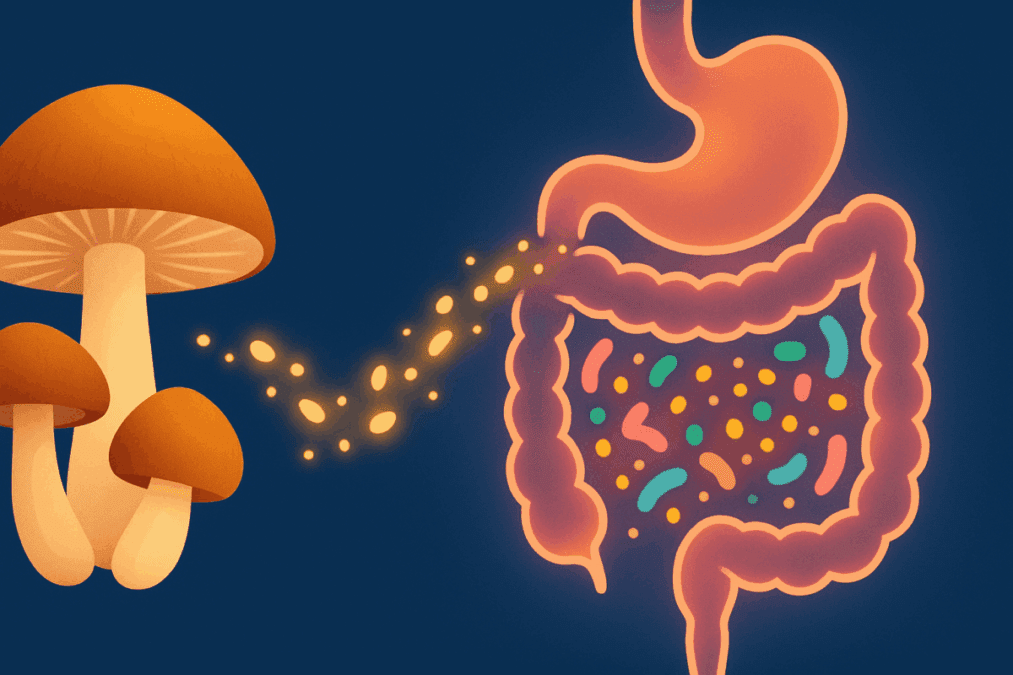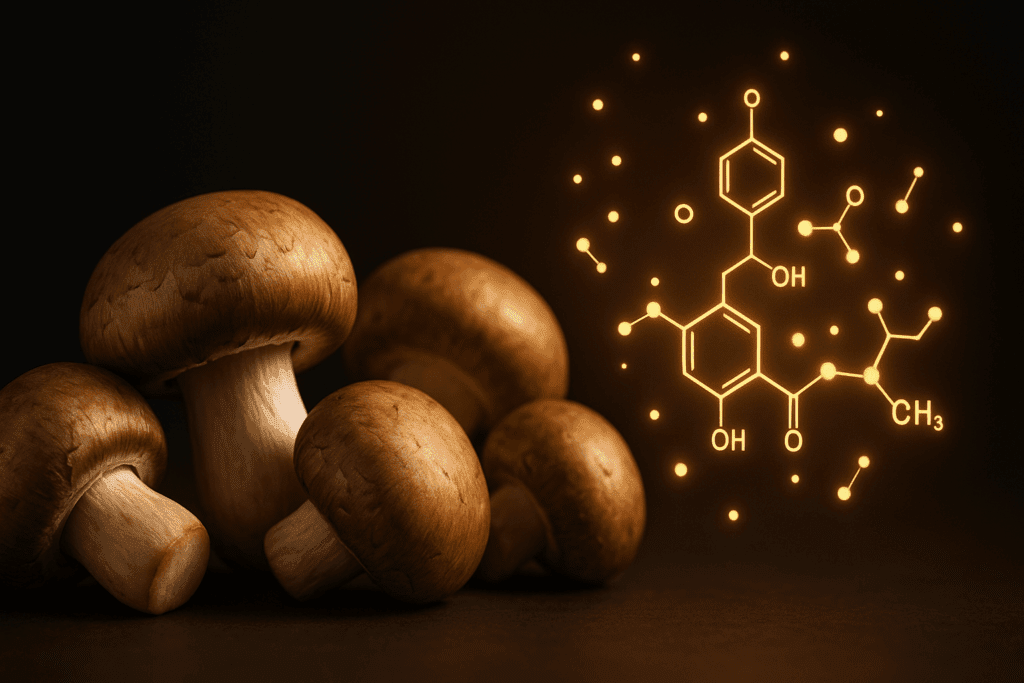Introduction: Unlocking the Nutritional Potential of Brown and Crimini Mushrooms
Mushrooms have occupied a revered place in culinary and medicinal traditions across cultures for centuries, celebrated not just for their flavor but also for their potential health benefits. Among the numerous varieties available, brown mushrooms and crimini mushrooms stand out as nutritional powerhouses that offer unique advantages for modern health-conscious individuals. As the scientific community delves deeper into understanding the composition and bioactive properties of these fungi, the nutritional value of brown mushrooms and the nutritional value of crimini mushrooms have come to the forefront of dietary recommendations. This article aims to explore in depth the scientifically backed benefits of these two varieties, while providing a comprehensive understanding of how they can enrich a well-rounded, health-promoting diet.
You may also like: How Lion’s Mane Supplements May Support ADHD and Cognitive Clarity: What Science Says About Lions Mane for Focus and Brain Health
Understanding the Basics: What Are Brown and Crimini Mushrooms?
Brown mushrooms and crimini mushrooms are often used interchangeably in culinary contexts, and for good reason: they are closely related. Scientifically known as Agaricus bisporus, brown mushrooms represent a more mature stage of the same species that produces the common white button mushroom. Crimini mushrooms, sometimes referred to as “baby bellas” or “baby portobellos,” are simply a younger, firmer, and darker brown version of the white button mushroom. The nutritional value of brown mushrooms is closely tied to their maturation process, during which they develop a deeper flavor profile and more concentrated nutrients compared to their paler counterparts. Similarly, the nutritional value of crimini mushrooms benefits from their early harvesting stage, where their antioxidant and phytonutrient contents are particularly robust. These nuanced differences make both types worthy of attention in the quest for optimal nutrition.

Nutrient Composition: A Closer Look at Brown and Crimini Mushrooms
One of the most remarkable aspects of the nutritional value of brown mushrooms and crimini mushrooms lies in their impressive micronutrient profiles. Both varieties are low in calories, fat-free, and cholesterol-free, making them ideal components of a heart-healthy diet. They provide essential vitamins such as B2 (riboflavin), B3 (niacin), B5 (pantothenic acid), and B9 (folate), each playing a critical role in cellular energy production and neurological health. Furthermore, they are rich sources of selenium, a powerful antioxidant mineral essential for immune function and thyroid health. The nutritional value of brown mushrooms is further accentuated by their higher levels of potassium compared to many fruits and vegetables, contributing to better blood pressure regulation. Similarly, the nutritional value of crimini mushrooms is enhanced by their significant content of copper and phosphorus, minerals integral to cardiovascular and skeletal system maintenance.
Protein Content and Its Implications for Plant-Based Diets
As plant-based diets gain traction among health enthusiasts and environmental advocates alike, the search for adequate non-animal protein sources becomes ever more pressing. While mushrooms are not traditionally recognized as high-protein foods, the nutritional value of brown mushrooms and crimini mushrooms offers a compelling case for their inclusion in vegetarian and vegan diets. These mushrooms provide all nine essential amino acids in modest amounts, offering a valuable supplementary protein source, especially when combined with other plant-based proteins like legumes and grains. Moreover, their unique composition includes bioactive peptides that may have antioxidant and anti-inflammatory properties, adding an extra dimension to their protein-related benefits. Thus, while they may not replace primary protein sources, brown and crimini mushrooms serve as crucial components of a balanced, nutrient-dense, plant-forward meal plan.
Antioxidants and Bioactive Compounds: Nature’s Protective Agents
The nutritional value of brown mushrooms and crimini mushrooms is significantly enhanced by their rich content of antioxidants and other bioactive compounds. Both varieties contain ergothioneine and glutathione, two potent antioxidants that are relatively rare in the plant kingdom. Ergothioneine, in particular, is a unique amino acid that protects cells from oxidative damage and is increasingly recognized for its potential role in reducing chronic disease risk. The nutritional value of crimini mushrooms becomes even more compelling when considering their phenolic and flavonoid compounds, which contribute to anti-inflammatory and immunomodulatory effects. Emerging research suggests that regular consumption of antioxidant-rich mushrooms may help mitigate the risk of neurodegenerative diseases, certain cancers, and cardiovascular conditions by neutralizing harmful free radicals and supporting cellular integrity.

Dietary Fiber and Gut Health: The Unsung Benefits
Modern nutritional science underscores the paramount importance of dietary fiber in maintaining optimal gut health, immune resilience, and metabolic balance. The nutritional value of brown mushrooms and crimini mushrooms extends into this domain as well, thanks to their notable fiber content, particularly in the form of beta-glucans. These soluble fibers act as prebiotics, nourishing beneficial gut microbiota and fostering a diverse and balanced intestinal environment. In turn, a healthy gut microbiome exerts far-reaching effects on digestion, mood regulation, immune defense, and even weight management. Additionally, beta-glucans have been linked to improved lipid profiles and glycemic control, making brown and crimini mushrooms excellent allies in the prevention and management of metabolic disorders such as type 2 diabetes and hyperlipidemia.
Vitamins and Minerals: Micronutrient Powerhouses
The remarkable array of vitamins and minerals found in brown and crimini mushrooms cannot be overstated. Vitamin D2 (ergocalciferol) synthesis occurs naturally when these mushrooms are exposed to ultraviolet light, offering a valuable dietary source of this crucial nutrient, particularly for individuals with limited sun exposure. Given the global prevalence of vitamin D deficiency and its association with compromised bone health, immune dysfunction, and mood disorders, the nutritional value of brown mushrooms and crimini mushrooms gains further significance. Moreover, the presence of B vitamins, including niacin and riboflavin, supports enzymatic reactions involved in energy metabolism, while potassium and phosphorus maintain electrolyte balance and bone density, respectively. Such a nutrient profile positions these mushrooms as foundational ingredients in the pursuit of holistic health and disease prevention.

Cognitive and Neurological Health: Emerging Evidence and Implications
Emerging research highlights a fascinating link between mushroom consumption and cognitive health, further elevating the nutritional value of brown mushrooms and crimini mushrooms. The presence of ergothioneine and other neuroprotective compounds suggests potential benefits in reducing the risk of age-related cognitive decline, including Alzheimer’s disease and other dementias. Studies have demonstrated that individuals who regularly consume mushrooms exhibit a slower rate of cognitive decline compared to those with lower intake levels, although more rigorous clinical trials are needed to establish causality. Nonetheless, the preliminary evidence indicates that incorporating antioxidant-rich foods like brown and crimini mushrooms into the diet could play a strategic role in maintaining cognitive vitality well into old age.
Weight Management and Satiety: Mushrooms as Functional Foods
In an era marked by escalating rates of obesity and related metabolic diseases, finding satiating, nutrient-dense foods is more important than ever. The nutritional value of brown mushrooms and crimini mushrooms supports their classification as functional foods conducive to weight management. Their high water content combined with dietary fiber promotes a sense of fullness without contributing excessive calories, facilitating reduced overall energy intake. Additionally, the umami flavor profile of these mushrooms enhances satiety and culinary satisfaction, potentially curbing cravings for high-calorie, nutrient-poor foods. Integrating brown and crimini mushrooms into meals can thus support sustainable, long-term weight management strategies without sacrificing flavor or enjoyment.
Immune Function and Anti-Inflammatory Effects: Strengthening the Body’s Defenses
A well-functioning immune system is the cornerstone of health, and diet plays a pivotal role in modulating immune responses. The nutritional value of brown mushrooms and crimini mushrooms encompasses key nutrients like selenium, zinc, and beta-glucans, all of which are instrumental in immune regulation. Beta-glucans, in particular, activate macrophages and natural killer cells, enhancing the body’s ability to fend off infections and abnormal cell growth. Meanwhile, the anti-inflammatory properties conferred by antioxidant compounds can help temper excessive immune reactions, reducing the risk of chronic inflammatory conditions. By integrating these mushrooms into a balanced diet, individuals may bolster their immune resilience naturally and holistically.

Practical Tips for Incorporating Brown and Crimini Mushrooms into the Diet
Given their versatile flavor and texture, brown and crimini mushrooms lend themselves to an astonishing variety of culinary applications. To maximize the nutritional value of brown mushrooms and crimini mushrooms, it is advisable to cook them lightly rather than overcooking, which can degrade heat-sensitive nutrients. Sautéing, grilling, or roasting enhances their natural umami characteristics without significant nutrient loss. Adding these mushrooms to salads, stir-fries, omelets, and grain bowls can seamlessly boost both flavor and nutritional density. For individuals seeking to replace meat partially or fully, using grilled crimini mushrooms as burger substitutes or brown mushroom slices in hearty stews offers a satisfying, nutrient-rich alternative.
Potential Considerations and Safety Tips
While the nutritional value of brown mushrooms and crimini mushrooms is impressive, it is important to consume them properly prepared to avoid potential risks associated with raw mushroom ingestion. Certain compounds, such as agaritine, are naturally occurring in raw mushrooms and have raised concerns in animal studies, although the relevance to human health at typical dietary intake levels remains under investigation. Cooking mushrooms significantly reduces agaritine content, enhancing both safety and digestibility. Furthermore, individuals with fungal allergies should approach mushroom consumption cautiously and consult healthcare providers if uncertain. As with all foods, moderation and diversity within the diet remain prudent guiding principles.

Frequently Asked Questions (FAQ) About the Nutritional Value of Brown Mushrooms and Crimini Mushrooms
1. How does cooking impact the nutritional value of brown mushrooms and crimini mushrooms?
Cooking methods can subtly alter the nutritional value of brown mushrooms and crimini mushrooms. High-heat techniques like grilling or sautéing often concentrate the flavor and some nutrients, especially minerals, due to water loss. However, certain vitamins like B vitamins are water-soluble and can be reduced during boiling or prolonged steaming. To preserve the nutritional value of crimini mushrooms, light sautéing or roasting is ideal, as it enhances taste while maintaining most bioactive compounds. Interestingly, some antioxidant levels, particularly ergothioneine, are stable even with moderate cooking, making brown and crimini mushrooms resilient choices for nutrient retention.
2. Are there significant differences in the nutritional value of brown mushrooms versus crimini mushrooms depending on farming practices?
Indeed, farming practices can subtly affect the nutritional value of brown mushrooms and crimini mushrooms. Mushrooms grown under controlled, organic conditions often exhibit slightly higher concentrations of certain micronutrients, like selenium and vitamin D, especially if exposed to natural sunlight or UV light during cultivation. Hydroponic systems or indoor farming methods might yield mushrooms with more consistent quality but sometimes lower phytonutrient density. Soil composition, organic matter, and light exposure are crucial factors influencing the final nutrient content. Therefore, sourcing brown or crimini mushrooms from reputable, eco-conscious farms can optimize the health benefits you receive.
3. Can brown and crimini mushrooms support athletic performance due to their nutrient profiles?
Yes, the nutritional value of brown mushrooms and crimini mushrooms makes them attractive for athletes and active individuals. The natural abundance of potassium supports muscle function and helps prevent cramps during intense physical activity. Additionally, the presence of B vitamins enhances energy metabolism, which is critical for sustaining endurance. The antioxidants found in these mushrooms may also play a role in mitigating exercise-induced oxidative stress, supporting quicker recovery. Including brown or crimini mushrooms as part of a pre- or post-workout meal offers a holistic way to nourish the body naturally without relying on overly processed supplements.
4. How does the nutritional value of crimini mushrooms contribute to bone health?
The nutritional value of crimini mushrooms can meaningfully contribute to maintaining strong bones. These mushrooms naturally provide phosphorus, an essential mineral involved in bone mineralization and structural integrity. When exposed to UV light, crimini mushrooms can also offer a significant amount of vitamin D2, critical for calcium absorption and bone density maintenance. Furthermore, the potassium in crimini mushrooms helps regulate acid-base balance, protecting bone matrix integrity over the long term. Including a variety of foods like crimini mushrooms in a calcium-rich diet can bolster skeletal health and reduce the risk of osteoporosis.
5. What role do brown mushrooms and crimini mushrooms play in cardiovascular wellness?
The nutritional value of brown mushrooms and crimini mushrooms extends beautifully into cardiovascular health. Their rich potassium content helps modulate blood pressure, while fiber content supports healthy cholesterol levels. Moreover, the antioxidants ergothioneine and selenium help reduce systemic inflammation, a known contributor to atherosclerosis. Incorporating these mushrooms into meals several times per week can be a heart-smart strategy, particularly when combined with other plant-based foods. Studies are beginning to explore how mushroom consumption could integrate into dietary interventions aimed at reducing overall cardiovascular disease risk.
6. Are there emerging innovations to enhance the nutritional value of brown mushrooms and crimini mushrooms?
Fascinating innovations are underway to enhance the nutritional value of brown mushrooms and crimini mushrooms. Agricultural researchers are experimenting with UV light treatments to maximize vitamin D2 levels naturally in post-harvest mushrooms. Biofortification, a process of enriching mushrooms with additional micronutrients like selenium through soil amendments, is gaining popularity. Some experimental practices involve using symbiotic mycorrhizal fungi to boost the bioavailability of minerals in the cultivated mushrooms. As technology advances, we can expect even more nutrient-dense varieties of brown and crimini mushrooms to become available to consumers seeking functional foods.
7. How can the nutritional value of crimini mushrooms benefit aging populations?
The nutritional value of crimini mushrooms holds special significance for aging populations. Their rich antioxidant profile may help combat cellular oxidative stress, a factor implicated in age-related conditions like macular degeneration and cognitive decline. Crimini mushrooms’ content of B vitamins, particularly niacin, supports brain function and metabolic health, both of which can wane with age. Moreover, their fiber and low-calorie properties can aid in weight management and digestive health, two critical concerns for seniors. By integrating crimini mushrooms into regular meals, older adults can easily bolster their intake of essential, age-supportive nutrients.
8. Can brown and crimini mushrooms support gut-brain axis health?
Emerging research suggests that the nutritional value of brown mushrooms and crimini mushrooms may positively influence gut-brain axis health. Their prebiotic fibers foster a robust gut microbiome, which communicates bidirectionally with the brain through neural, hormonal, and immune pathways. A healthy gut microbiota is linked to improved mood regulation, stress resilience, and cognitive clarity. Furthermore, the anti-inflammatory effects of mushroom-derived antioxidants may reduce gut inflammation, a factor increasingly connected to neurological disorders. Regularly consuming brown or crimini mushrooms could thus offer indirect benefits for emotional and mental well-being through gut health optimization.
9. How do brown mushrooms and crimini mushrooms fit into sustainable eating practices?
Beyond their health benefits, the nutritional value of brown mushrooms and crimini mushrooms intersects compellingly with sustainability. Mushrooms have a remarkably low environmental footprint compared to most protein-rich foods, requiring minimal land, water, and energy inputs to cultivate. Additionally, they often grow on agricultural waste byproducts, making them champions of circular agriculture. Choosing brown and crimini mushrooms supports not only personal health but also broader ecological health. As consumers increasingly seek ways to align their diets with environmental stewardship, these fungi represent an accessible and highly nutritious solution.
10. What future research directions are likely to expand our understanding of brown and crimini mushrooms’ health benefits?
Future research is poised to deepen our appreciation of the nutritional value of brown mushrooms and crimini mushrooms. Scientists are exploring the potential immunomodulatory effects of specific beta-glucans found in these mushrooms, aiming to develop functional foods that enhance immune resilience naturally. Investigations into how mushroom bioactives influence microbiome composition and systemic inflammation are also gaining momentum. Additionally, studies are examining whether regular mushroom consumption might offer protective effects against metabolic syndrome and cognitive decline. As the evidence base grows, brown and crimini mushrooms may become even more central to preventive health strategies rooted in nutrition science.

Conclusion: Embracing the Nutritional Power of Brown and Crimini Mushrooms for Optimal Health
In light of the scientific evidence, there is little doubt that the nutritional value of brown mushrooms and the nutritional value of crimini mushrooms confer substantial health benefits worthy of wider recognition. Their rich profiles of vitamins, minerals, antioxidants, and bioactive compounds position them as true superfoods within a balanced, health-promoting diet. From supporting cardiovascular health and cognitive function to enhancing immune resilience and gut microbiota diversity, these humble fungi offer a cornucopia of advantages that align perfectly with modern nutritional priorities. As ongoing research continues to elucidate even more profound connections between mushroom consumption and long-term health outcomes, now is an opportune time to embrace these versatile, nutrient-dense foods. By thoughtfully incorporating brown and crimini mushrooms into everyday meals, individuals can make a flavorful, evidence-based investment in their overall well-being.
Was this article helpful? Don’t let it stop with you. Share it right now with someone who needs to see it—whether it’s a friend, a colleague, or your whole network. And if staying ahead on this topic matters to you, subscribe to this publication for the most up-to-date information. You’ll get the latest insights delivered straight to you—no searching, no missing out.
Further Reading:
Mushrooms—Biologically Distinct and Nutritionally Unique
Important Note: The information contained in this article is for general informational purposes only, and should not be construed as health or medical advice, nor is it intended to diagnose, prevent, treat, or cure any disease or health condition. Before embarking on any diet, fitness regimen, or program of nutritional supplementation, it is advisable to consult your healthcare professional in order to determine its safety and probable efficacy in terms of your individual state of health.
Regarding Nutritional Supplements Or Other Non-Prescription Health Products: If any nutritional supplements or other non-prescription health products are mentioned in the foregoing article, any claims or statements made about them have not been evaluated by the U.S. Food and Drug Administration, and such nutritional supplements or other health products are not intended to diagnose, treat, cure, or prevent any disease.


